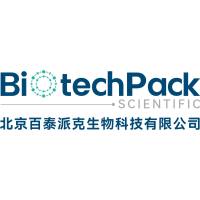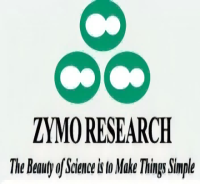Immunohistochemistry Protocol-Cytokine Antibodies
互联网
1969
Introduction
Immunohistochemistry is used to identify the location
and distribution of target antigens in cells or
tissues by staining with a specific antibody. The
antibody is conjugated to either a fluorescent or
colorimetric label, and the location of the label
seen through a microscope approximates the position
of the target antigen. We present here a
method for staining of cervical tissue.
Purpose
Procedure for indirect staining of cytokines in
paraformaldehyde fixed cryostat sections with
monoclonal antibodies.
Procedure from Walid Al-Saleh Thesis (ULG, Pr.
Boniver Service of Anatomo-pathology), Liege,
Belgium. The cytokines IL-2, IL-4, IL-6, IL-10, IL-12,
IFN- γ and TNF-α proteins in cervical biopsies were
detected by an original immunohistology technique.
Materials and Equipment
• Frozen sections of sample tissues
• Refrigerator (4ºC)
• Glass slides
• Primary antibody
• Coverslips
• Secondary antibody
• 4% Paraformaldehyde, pH 7.4
• Hematoxylin
• 1% Goat Serum in TBS/Saponin
•Ethanol
• Diaminobenzidine (DAB) substrate solution
• Microscope
• Tris-buffered Saline, 0.1% Saponin, pH 7.4
• Tris-buffered Saline/0.3% H2O2/0.1% Saponin,
0.02% NaN3
• Avidin/Biotin/Peroxidase
(Vectastain, Vector Labs)
Immunohistochemistry is used to identify the location
and distribution of target antigens in cells or
tissues by staining with a specific antibody. The
antibody is conjugated to either a fluorescent or
colorimetric label, and the location of the label
seen through a microscope approximates the position
of the target antigen. We present here a
method for staining of cervical tissue.
Purpose
Procedure for indirect staining of cytokines in
paraformaldehyde fixed cryostat sections with
monoclonal antibodies.
Procedure from Walid Al-Saleh Thesis (ULG, Pr.
Boniver Service of Anatomo-pathology), Liege,
Belgium. The cytokines IL-2, IL-4, IL-6, IL-10, IL-12,
IFN- γ and TNF-α proteins in cervical biopsies were
detected by an original immunohistology technique.
Materials and Equipment
• Frozen sections of sample tissues
• Refrigerator (4ºC)
• Glass slides
• Primary antibody
• Coverslips
• Secondary antibody
• 4% Paraformaldehyde, pH 7.4
• Hematoxylin
• 1% Goat Serum in TBS/Saponin
•Ethanol
• Diaminobenzidine (DAB) substrate solution
• Microscope
• Tris-buffered Saline, 0.1% Saponin, pH 7.4
• Tris-buffered Saline/0.3% H2O2/0.1% Saponin,
0.02% NaN3
• Avidin/Biotin/Peroxidase
(Vectastain, Vector Labs)
Protocol
1. Dry frozen tissue sections
of 8 μm thickness
at room temperature
for 2 hours.
2. Fix sections with 4% paraformaldehyde for 15 minutes at room temperature.
3. Wash slides 2X, 4 minutes each, with TBS/0.1% saponin.
4. Block endogenous peroxidase by incubating 30 minutes
in TBS/0.3% H2O2/0.1% Saponin, 0.02% NaN3.
5. Wash slides 3X, 3 minutes each, with TBS/saponin.
6. Block non-specific binding sites with 1/100
diluted goat serum in TBS/saponin for 20 minutes.
7. Incubate overnight at 4ºC, with the appropriate antibody.
8. Wash slides 4 times in TBS/saponin, incubate
the slides with biotinylated secondary antibody for 30 minutes.
9. Add avidin-biotin-peroxidase reagents, and
reveal the resulting peroxidase activity by
incubating the slides with a 0.5 mg/mL
HRP substrate solution (DAB + H2O2 prepared in distilled water).
1. Dry frozen tissue sections
of 8 μm thickness
at room temperature
for 2 hours.
2. Fix sections with 4% paraformaldehyde for 15 minutes at room temperature.
3. Wash slides 2X, 4 minutes each, with TBS/0.1% saponin.
4. Block endogenous peroxidase by incubating 30 minutes
in TBS/0.3% H2O2/0.1% Saponin, 0.02% NaN3.
5. Wash slides 3X, 3 minutes each, with TBS/saponin.
6. Block non-specific binding sites with 1/100
diluted goat serum in TBS/saponin for 20 minutes.
7. Incubate overnight at 4ºC, with the appropriate antibody.
8. Wash slides 4 times in TBS/saponin, incubate
the slides with biotinylated secondary antibody for 30 minutes.
9. Add avidin-biotin-peroxidase reagents, and
reveal the resulting peroxidase activity by
incubating the slides with a 0.5 mg/mL
HRP substrate solution (DAB + H2O2 prepared in distilled water).
11. Counterstain for 1 minute with hematoxylin.
12. Dehydrate slides with sequential ethanol
washes of 1 minute each starting with
75%, followed by 80% and finishing with
a 100% ethanol wash.
13. Seal slides.
14. Analyze by optical microscopy.
Note: It is not necessary to add detergent to the TBS buffer. The
protocol can be followed s is with saponin omitted from all buffers
when staining CDs
<center>
<p>
</p>
</center>
12. Dehydrate slides with sequential ethanol
washes of 1 minute each starting with
75%, followed by 80% and finishing with
a 100% ethanol wash.
13. Seal slides.
14. Analyze by optical microscopy.
Note: It is not necessary to add detergent to the TBS buffer. The
protocol can be followed s is with saponin omitted from all buffers
when staining CDs
上一篇:IHC Protocol for Free Floating Brain Sections 下一篇:IMMUNOHISTOCHEMISTRY on PARAFFIN OR CRYOSECTIONS








